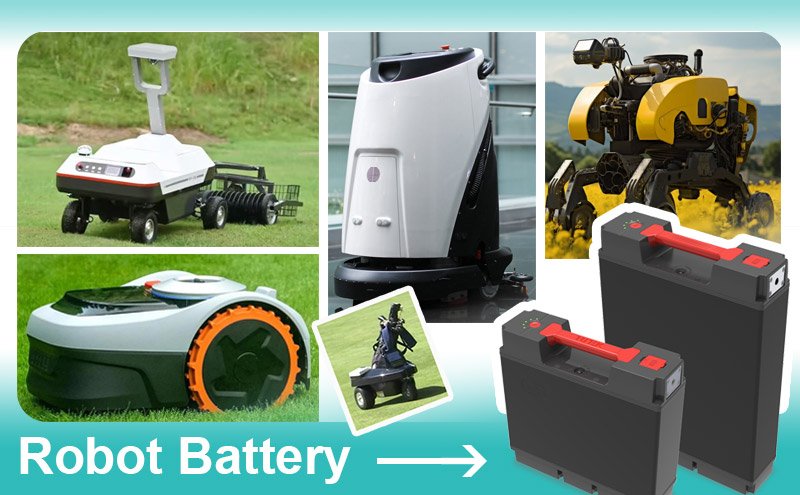Automated Guided Vehicles (AGVs) are transforming logistics, warehousing, and manufacturing by ensuring smooth, automated material handling. At the heart of every AGV lies its battery system, which determines how long it can operate, how fast it recharges, and how reliable it is under demanding conditions. Choosing the best AGV battery is not just a technical decision—it directly affects productivity, safety, and operational costs.
What is an AGV Battery?
An AGV battery is the power source that drives the vehicle’s motors, sensors, and navigation systems, enabling it to transport loads autonomously. Unlike traditional vehicle batteries, AGV batteries must deliver consistent power over long cycle life, support fast or opportunity charging, and withstand industrial environments.

Key Components
- Battery Cells: Store and release energy (e.g., lead-acid or lithium-ion cells).
- Battery Management System (BMS): Monitors voltage, temperature, and battery status (such as state of charge, health, and faults) to ensure safety and efficiency.
- Housing: Protects against dust, moisture, and impacts.
- Connectors: Enable seamless integration with AGV systems.
Key Metrics
- Voltage: Common ratings include 24V, 48V, or 80V, depending on AGV power needs.
- Capacity (Ah): Indicates how much charge the battery holds (e.g., 100 Ah).
- Energy Density (Wh/kg): Measures energy per unit weight, critical for lightweight AGVs.
- Cycle Life: Number of charge-discharge cycles before capacity drops significantly.
Types of Batteries for AGVs
AGVs rely on several battery types, each with unique strengths and trade-offs. Below, we explore the main options available in 2025.
Lead-Acid Batteries
Subtypes: Flooded batteries, Absorbent Glass Mat batteries (AGM), and Gel batteries .
Pros:
- Low initial cost ($500-$2,000 for typical AGV packs).
- Widely available and compatible with legacy systems.
- Proven reliability in low-intensity applications.
Cons:
- Heavy (100-300 kg per kWh), reducing AGV payload capacity.
- Short cycle life (500-1,000 cycles).
- Slow charging (6-8 hours) and high maintenance (e.g., water top-ups for flooded types).
Best for: Budget-conscious operations with single-shift, low-duty cycles.
Lithium-Ion Batteries
Subtypes: Lithium Iron Phosphate batteries (LiFePO4), Lithium-Titanate batteries (LTO), Nickel Manganese Cobalt batteries (NMC).
Pros:
- High energy density (150-250 Wh/kg), enabling compact designs.
- Long cycle life (2,000-5,000+ cycles), reducing replacement costs.
- Fast charging (30-60 minutes) with opportunity charging capabilities.
- Lightweight and low maintenance.
Cons:
- Higher upfront cost ($2,000-$10,000 depending on capacity).
- Requires a BMS for safety and thermal management.
Best for: High-demand, 24/7 operations in automated warehouses or manufacturing.
Nickel-Based Batteries
Subtypes: Nickel-Cadmium batteries (NiCd), Nickel-Metal Hydride batteries (NiMH).
Pros:
- Robust in extreme temperatures (-20°C to 60°C).
- Good discharge rates for short bursts of power.
Cons:
- Lower energy density (50-80 Wh/kg) compared to lithium-ion.
- Environmental concerns (cadmium in NiCd is toxic).
- Phasing out due to lithium-ion dominance.
Best for: Legacy systems or niche applications requiring temperature resilience.
Emerging Technologies
Solid-State Batteries: Promise higher energy density and safety but are not yet mainstream for AGVs (expected commercialization by 2028).
Hydrogen Fuel Cells: Offer long runtime and fast refueling but require infrastructure investment.
Comparison Table
Feature | Lead-Acid | NiMH | Lithium-Ion (LFP/NMC) |
|---|---|---|---|
Cycle Life | 500–1,000 | 800–1,200 | 2,000–5,000+ |
Charging Speed | 6–8 hrs | 4–6 hrs | 1–2 hrs / opportunity |
Energy Density | Low | Medium | High |
Maintenance | High | Moderate | Low |
Weight | Heavy (100-300 kg) | Medium (50-80 kg) | Light (10-20 kg) |
Cost (Initial) | Low ($500-$2,000) | Medium ($1,000-$3,000) | Higher ($2,000-$10,000) |
Best For | Budget AGVs | Mid-tier AGVs | High-performance AGVs |
Key Factors to Consider When Choosing an AGV Battery
Voltage & Capacity – Match AGV design requirements.
Battery Life & Durability – Longer life reduces replacement frequency and improves ROI.
Charging Speed – Fast and opportunity charging to cut downtime.
Energy Density & Weight – Important for smaller, compact AGVs.
Battery Safety Features – Integrated BMS, thermal management, certifications.
Operating Conditions – Reliable performance in cold storage or high-heat factories.
Scalability & Flexibility – Modular design supports future upgrades.
Cost & ROI – Consider long-term benefits, not just upfront price.
How to Calculate Your AGV Battery Requirements
To select the right battery, calculate your AGV’s energy needs:
- Determine Power Draw: Identify the AGV’s motor, sensor, and auxiliary power consumption (e.g., 500W for a small AGV, 2,000W for heavy-duty).
- Estimate Runtime: Decide how many hours the AGV operates per shift (e.g., 8 hours).
- Calculate Energy Needs: Use the formula:
Energy (Wh) = Power (W) × Hours × (1/Efficiency)
Example: A 1,000W AGV running 8 hours at 80% efficiency needs 1,000 × 8 ÷ 0.8 = 10,000 Wh (10 kWh). - Select Capacity: Convert to Ah: Ah = Wh ÷ Voltage. For a 48V system, 10,000 ÷ 48 = 208 Ah.
- Factor in Cycle Life: Ensure the battery supports enough cycles for your operational lifespan (e.g., 3,000 cycles ≈ 8 years at 1 cycle/day).
Case Study: A warehouse AGV handling 1,000 kg loads requires 1,500W over 8 hours. With 85% efficiency and a 48V system, it needs:
1,500 × 8 ÷ 0.85 = 14,118 Wh ≈ 294 Ah. A 300 Ah LiFePO4 battery would suffice, offering 3,000+ cycles.
Conclusion
When evaluating AGV battery manufacturers, always compare not just the upfront investment but the life cycle cost, battery performance, and after-sales support offered by battery suppliers. This holistic approach ensures long-term reliability, safety, and lower maintenance costs.
Looking for a reliable AGV battery partner?
With 15+ years of expertise, Tritek delivers customized lithium batteries with advanced BMS, long cycle life, and reliable performance across diverse operating temperature ranges. Our solutions help AGVs run longer, charge faster, and stay safer.
👉 Contact Tritek today to power your AGVs with smarter energy.



